Epidemiology of envenomations by terrestrial venomous animals in Brazil based on case reporting: from obvious facts to contingencies
- PMID: 26042152
- PMCID: PMC4453217
- DOI: 10.1186/s40409-015-0011-1
Epidemiology of envenomations by terrestrial venomous animals in Brazil based on case reporting: from obvious facts to contingencies
Abstract
Background: Envenomation remains a neglected public health issue in most tropical countries. A better understanding of the epidemiology of bites and stings by venomous animals should facilitate their prevention and management. This study aimed to explore the benefits that could be derived from the compulsory notification of cases as it is now routinely practiced in Brazil.
Methods: The Brazilian Notifiable Diseases Information System (SINAN) was consulted online for the 2001-2012 period on all envenomations by venomous terrestrial animals. We studied the incidence, severity, number of deaths, gender, season of accident and time between the accident and hospital consultation.
Results: In total, 1,192,667 accidents and 2,664 deaths from terrestrial venomous animals (snakes, scorpions, spiders, bees and caterpillars) were reported in Brazil during these 12 years, the circumstances of which are detailed in this study. Most envenomations and deaths were caused by snakebites and scorpion stings. However, incidence and mortality showed high regional variations. During this period, the steady and parallel increase of the cases from all the species resulted from several factors including the human population increase, gradual improvement of data collection system and, probably, environmental and socioeconomic factors affecting in a different way the incidence of envenomation by each zoological group and by region.
Conclusion: Mandatory reporting of cases appears to be a useful tool to improve the management of envenomations. However, local studies should be continued to account for the variability of accident circumstances and refine measures necessary for their management.
Keywords: Africanized bees; Brazil; Caterpillars; Envenomation; Epidemiology; Scorpions; Snakes; Spiders.
Figures
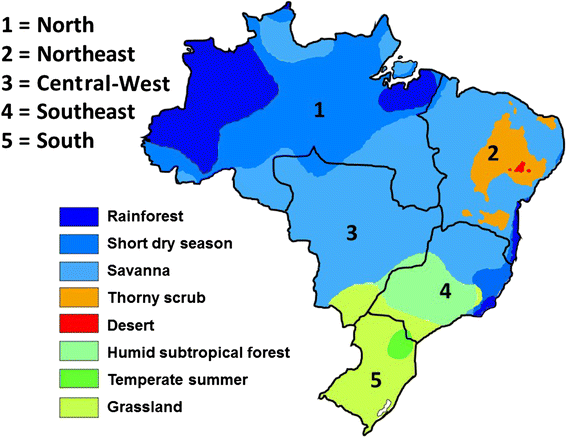
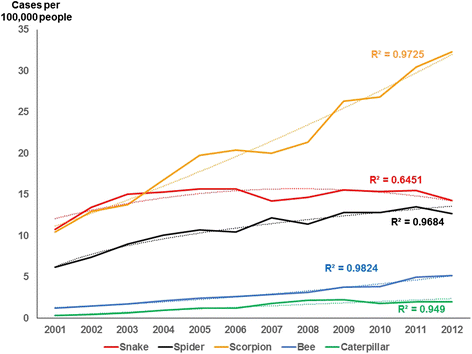



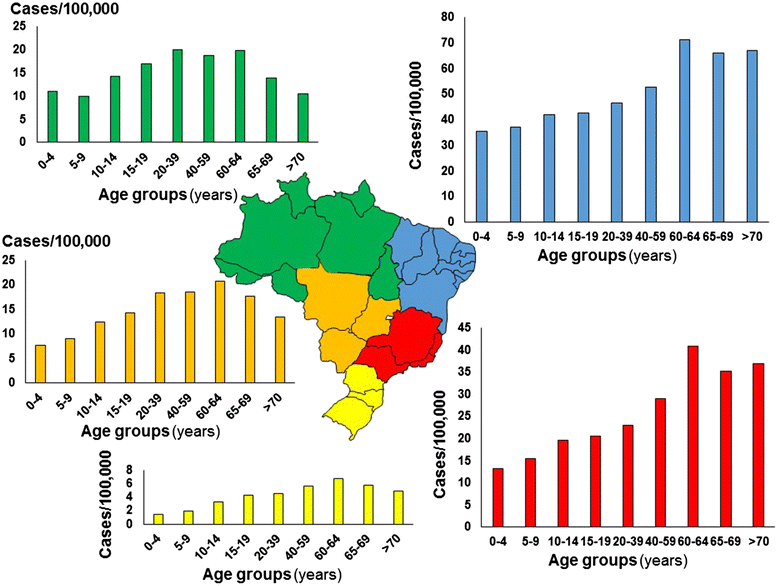



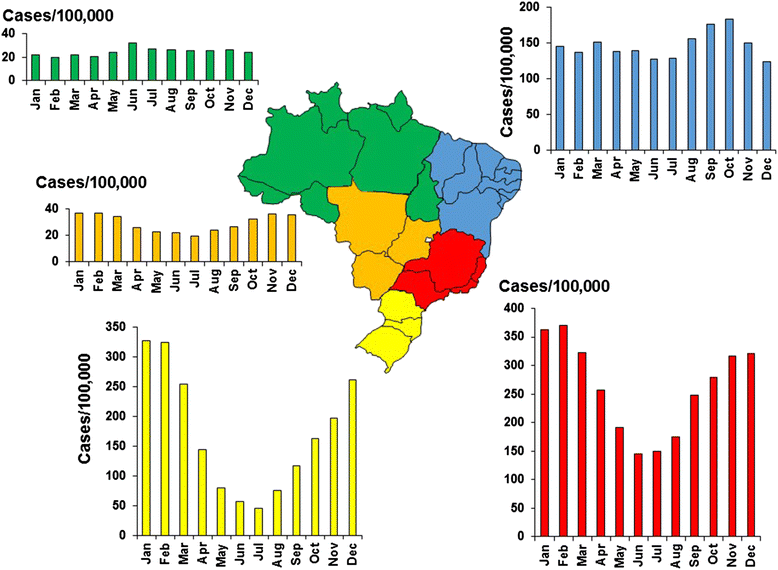
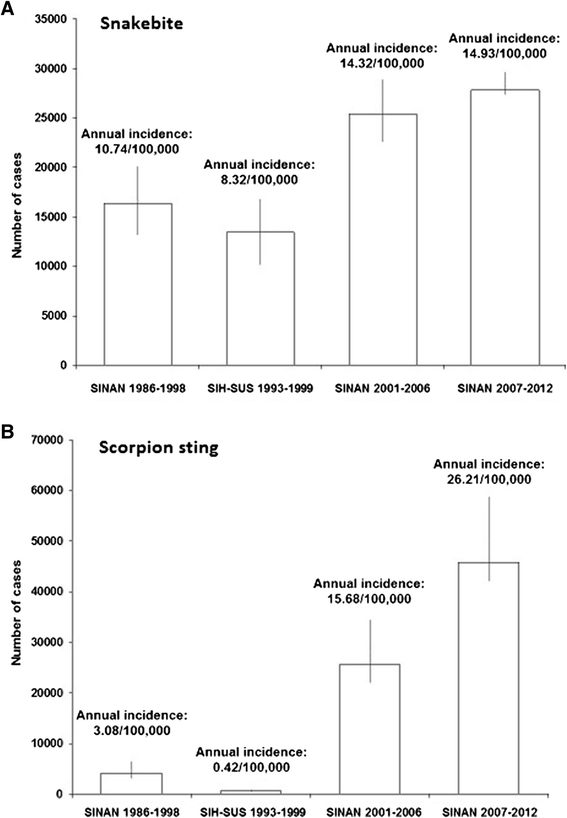
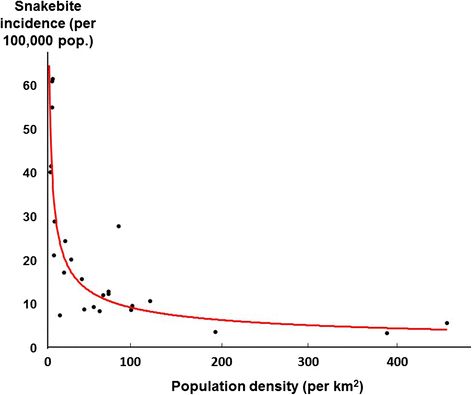
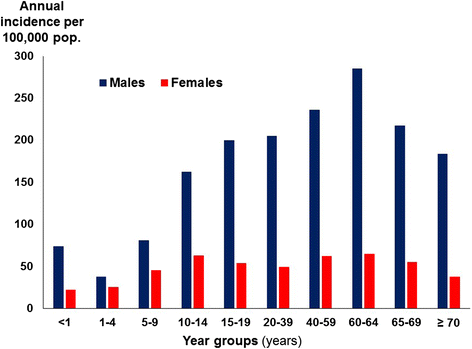


References
-
- Kasturiratne A, Wickremasinghe AR, de Silva N, Gunawardena NK, Pathmeswaran A, Premaratna R, et al. The global burden of snakebite: a literature analysis and modelling based on regional estimates of envenoming and deaths. PLoS Med. 2008;5(11):e218. doi: 10.1371/journal.pmed.0050218. - DOI - PMC - PubMed
-
- World Health Organization. Guidelines for the production control and regulation of snake antivenom immunoglobulins. Geneva: World Health Organization; 2010. http://www.who.int/bloodproducts/snake_antivenoms/snakeantivenomguidelin.... Accessed 13 July 2014.
LinkOut - more resources
Full Text Sources
Other Literature Sources

